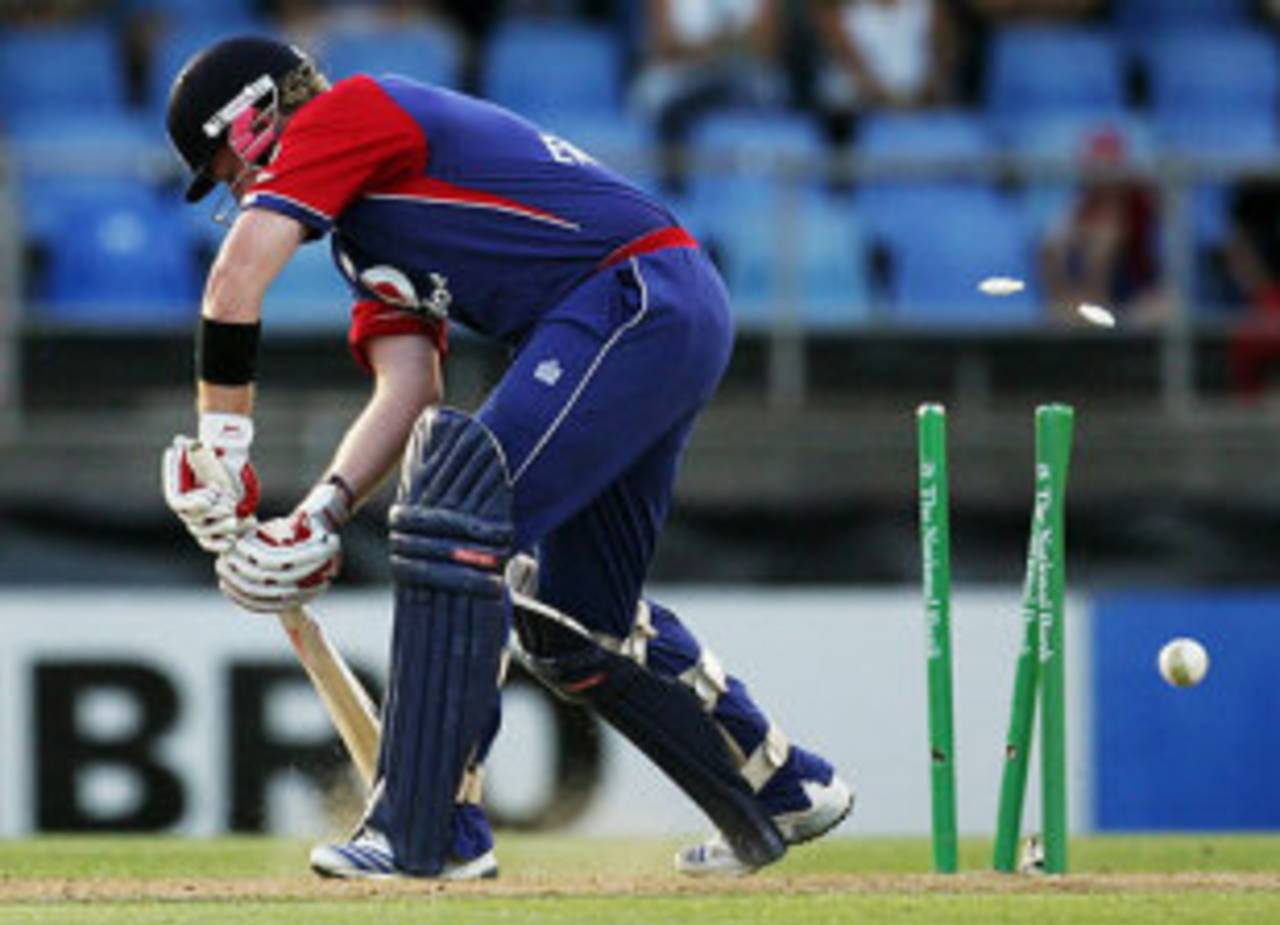As part of my stint in the England Performance Programme, I was this week offered the chance to take part in a development workshop entitled "Innovation". It was primarily aimed at cricketers in more advanced Performance Programme squads than mine, but legspinners outside the top tiers were also invited as part of an initiative to develop English wrist spin.
There were about a dozen legspinners present, from myself right up to those with county contracts. Regardless of our reputations, we were each given one delivery with which to impress. Sadly, none of us passed muster and we all spent the rest of the session collecting balls and making cups of tea for all the seam bowlers, batsmen and finger spinners. It gave us a good opportunity to truly appreciate the virtues of reliability, dependability, familiarity and consistency that are so much a part of English cricket.
That said, if there was one thing the innovation workshop wasn't about, it was consistency. With the increasing importance of Twenty20 cricket, England are looking for batsmen who can play innovative shots and bowlers who can bowl a variety of different deliveries. That was what we were here for.
The batsmen worked on a plethora of strokes, many of which I'd never seen before. One batsman spent the whole morning mastering the art of pinging the ball in unexpected directions off the very end of his bat handle. He made contact with maybe one in 30 deliveries and he says that could make the difference between victory and defeat in the event of a tight finish. Another right-handed batsman easily perfected the switch forward-defensive. As the bowler ran in, he reversed his grip and stance and played an immaculate left-handed forward-defensive stroke. He later revealed to me that he was, in fact, a left-handed batsman but had been working on batting right-handed in order to keep the bowler guessing.
A lot of the bowling innovations revolved around slower balls. In this day and age, merely having one type of slower ball is not enough. You need at least eight. One player reckoned he had 27 different slower balls at his disposal and demonstrated each of them in turn. I have to say, I couldn't really detect the difference between some of them, but then again, I'm not an elite batsman who would be attuned to these things. This bowler actually goes so far as to classify himself as a slower-ball bowler, because he never actually delivers the quicker one any more. It's hard to argue with the tactic when you see the effectiveness. The batsman never once laid handle on ball.
One player stood out above all others and it was a wicketkeeper. Bizarrely, he actually excelled at bowling, despite never having bowled a ball before in his life. With bowlers seeking ever-greater variety, this guy was the real deal. The coaches were in awe as he served up a smorgasbord of slow long-hops, wide half-volleys and double-bouncing wides. There is no way on earth any batsman will ever be able to predict the next delivery, and this keeper's being fast-tracked through the Performance Programme as a result.
